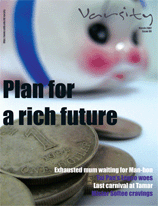


Our Community
Heritage conservation:
Youth awaken to local identity
Mirana May Szeto, an assistant professor of the comparative literature department at the University of Hong Kong who does research on local cultural policy and community revitalisation, said the ˇ§post-colonial effectˇ¨, where young people began to realise they belong to their place for the first time, was a normal reaction in former colonies.
But that effect did not surface immediately in Hong Kong after the end of the British colonial rule. Dr Szeto said the citizens were distracted by worries including the economic crisis in 1998 and the plague of SARS in 2003.
She said the local identity naturally sprang up after the economy had revived, and the young people came out and talked about preserving the heritage and culture that had been damaged.
As the youth start to think about and want to decide their own future, participative planning, which involves the community in urban planning, has become a demand in the current heritage conservation movement, the academic explained.
Although the government is trying to reach out to the public through different aspects, Dr Szeto suggested that Hong Kong, in the long term, should have its own cultural charter as a reference to guide both the government and the public in order to avoid further disputes.
The government can learn from the charters in other former colonies like Mexico and Indonesia, she said. The Mexico Charter, for example, pays particular attention to ˇ§vernacular heritageˇ¨ ˇV the ordinary peopleˇ¦s living conditions and their socio-economic-cultural networks, she cited.
But activists and analysts consider that before there is a concrete conservation planning, historic buildings and sites like the Queenˇ¦s Pier, Victoria Prison and traditional wet markets are still at stake.
